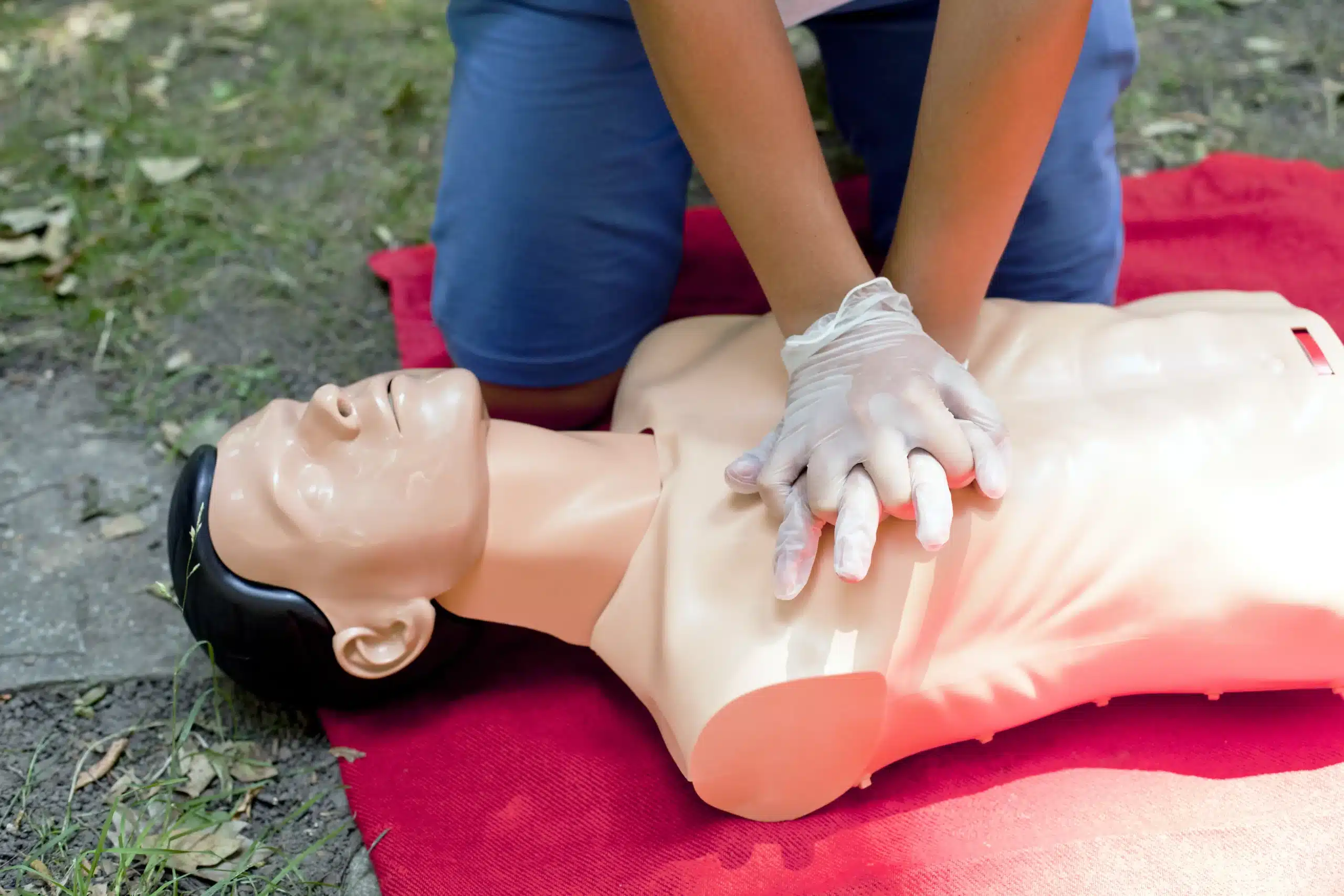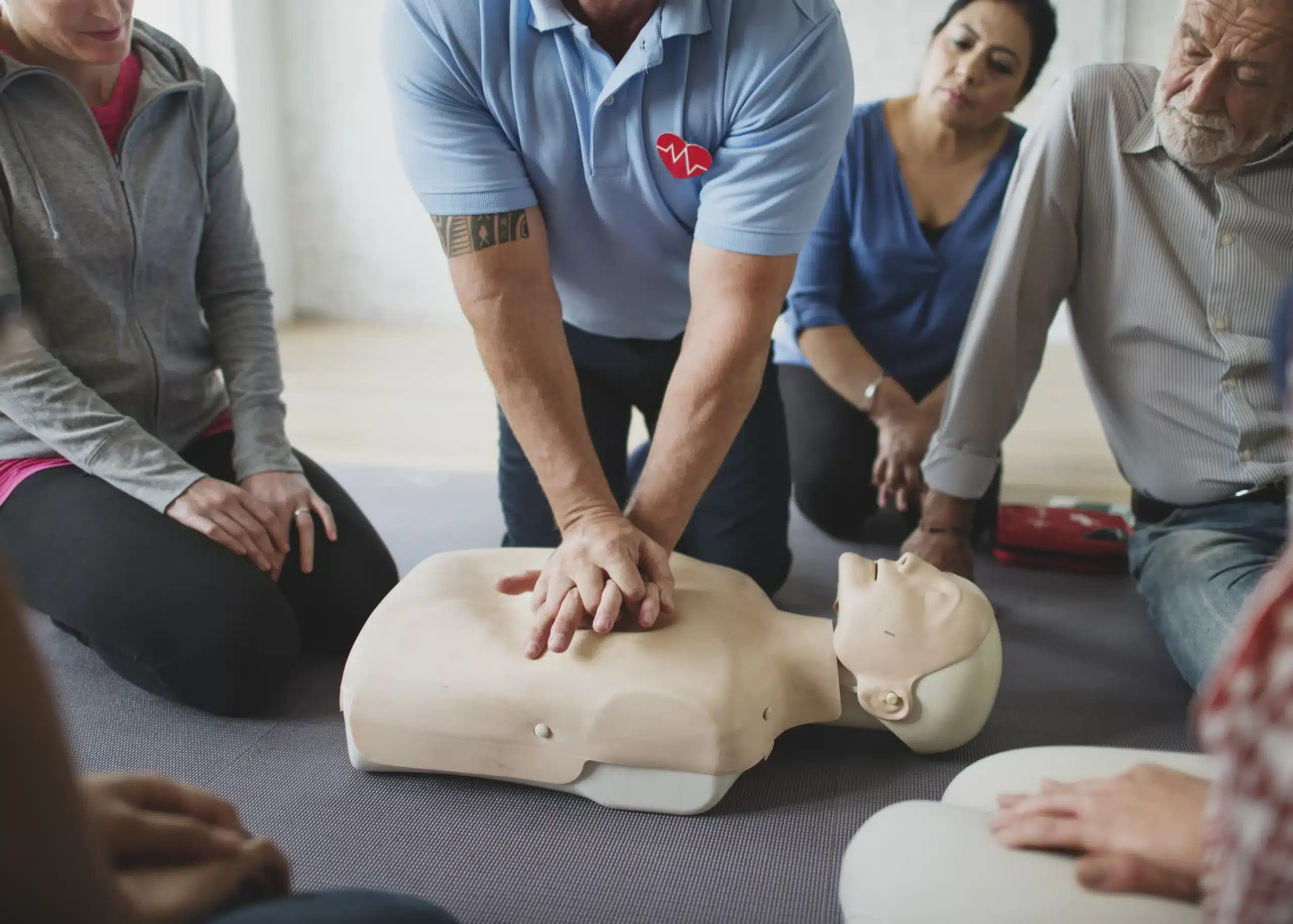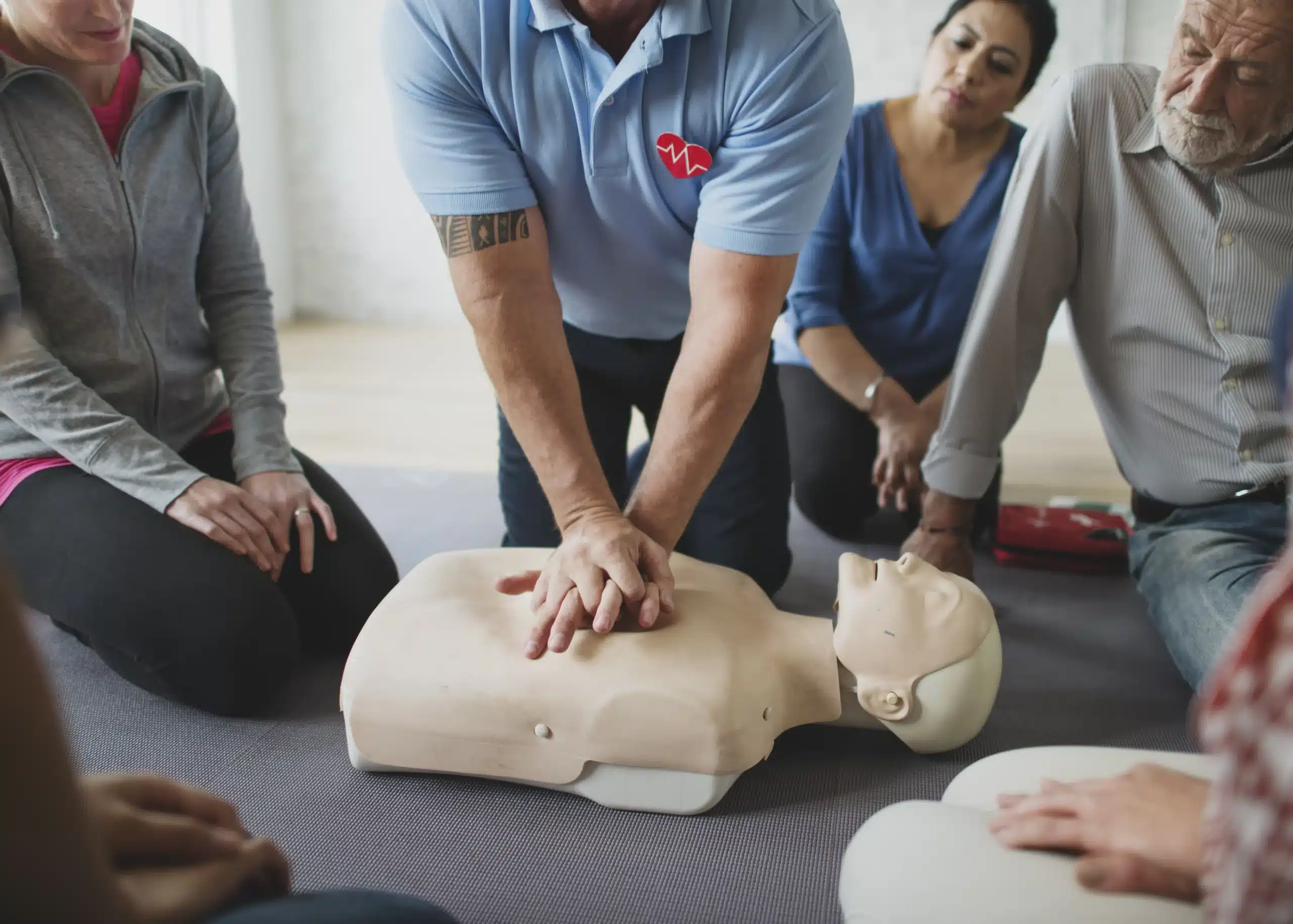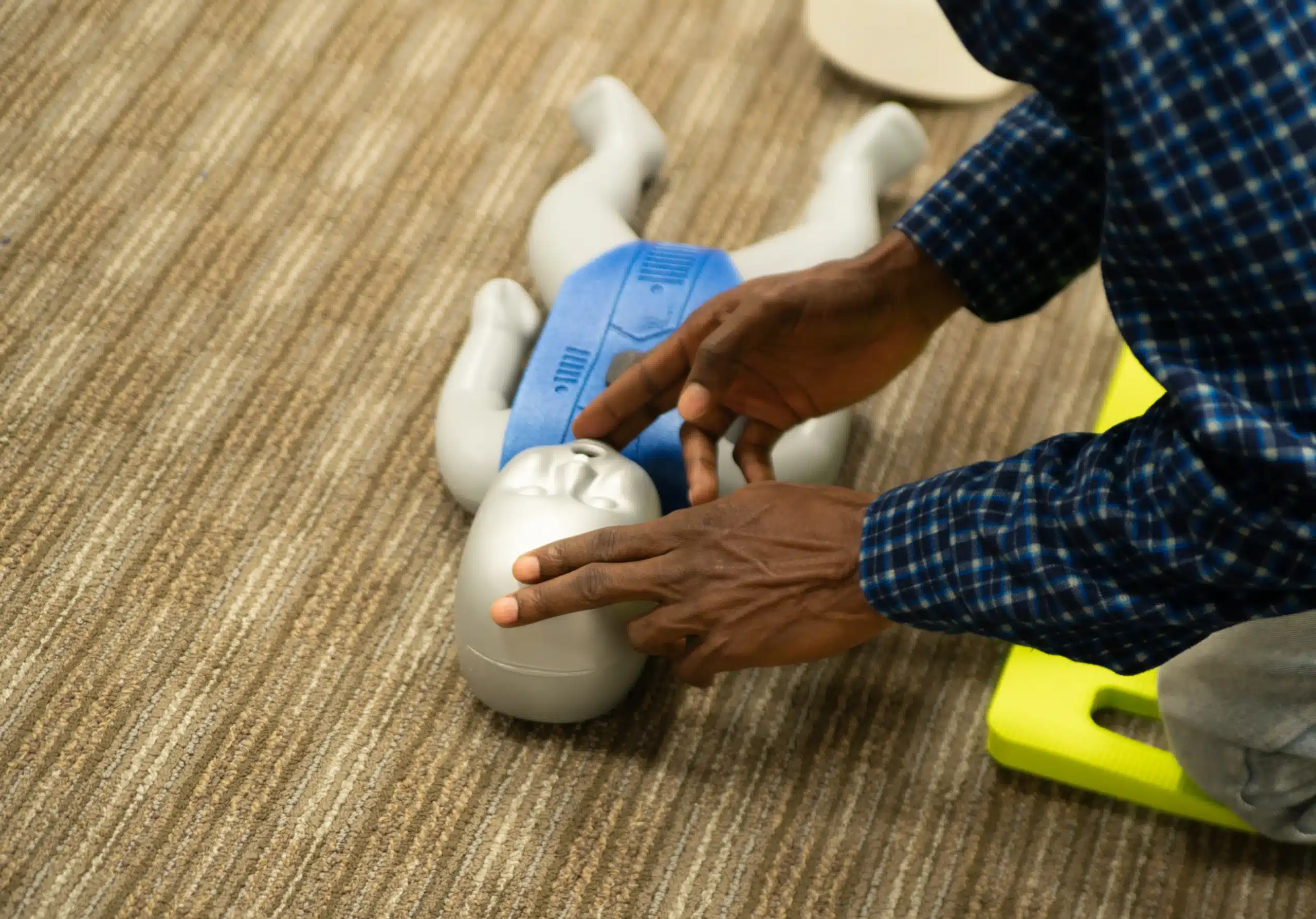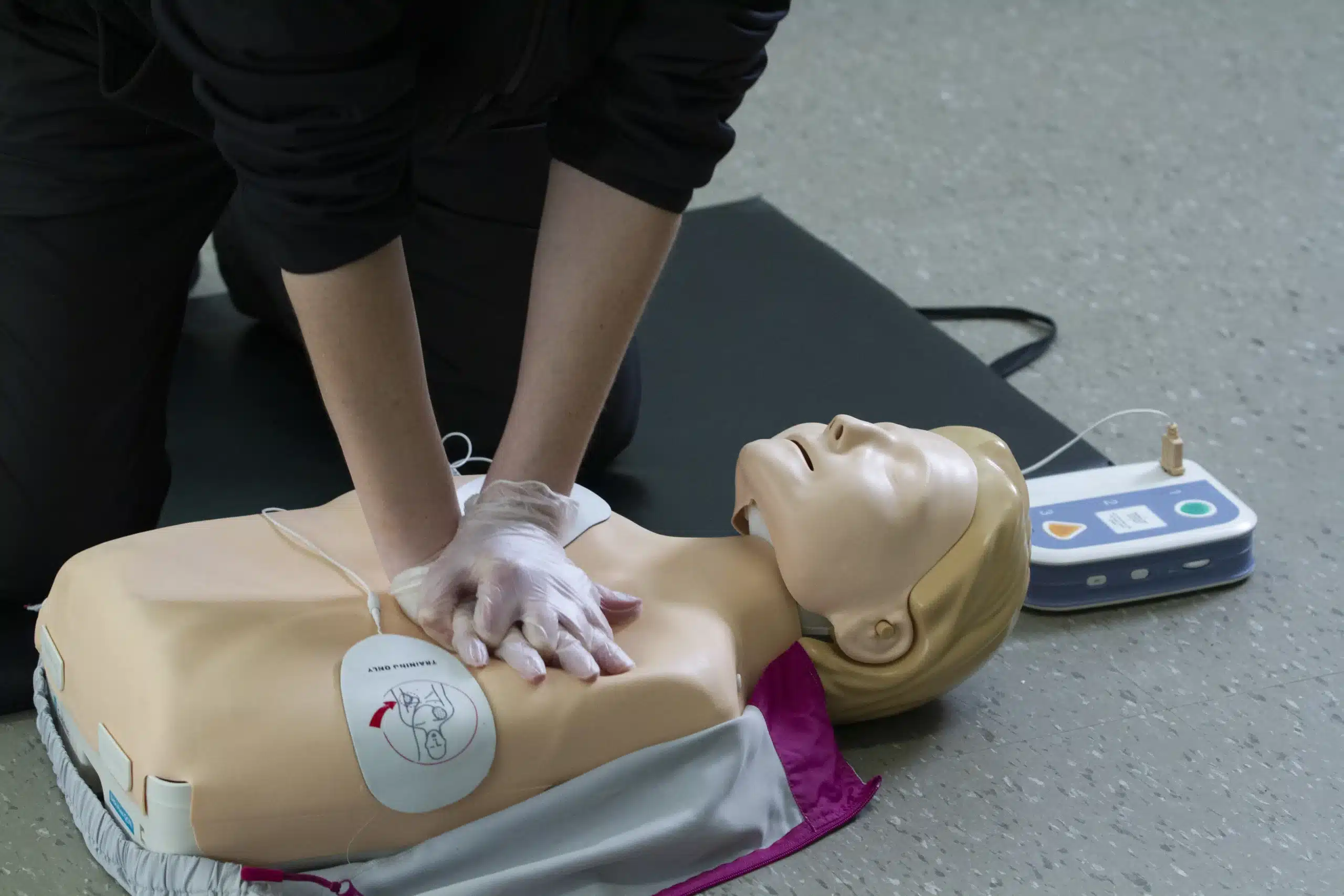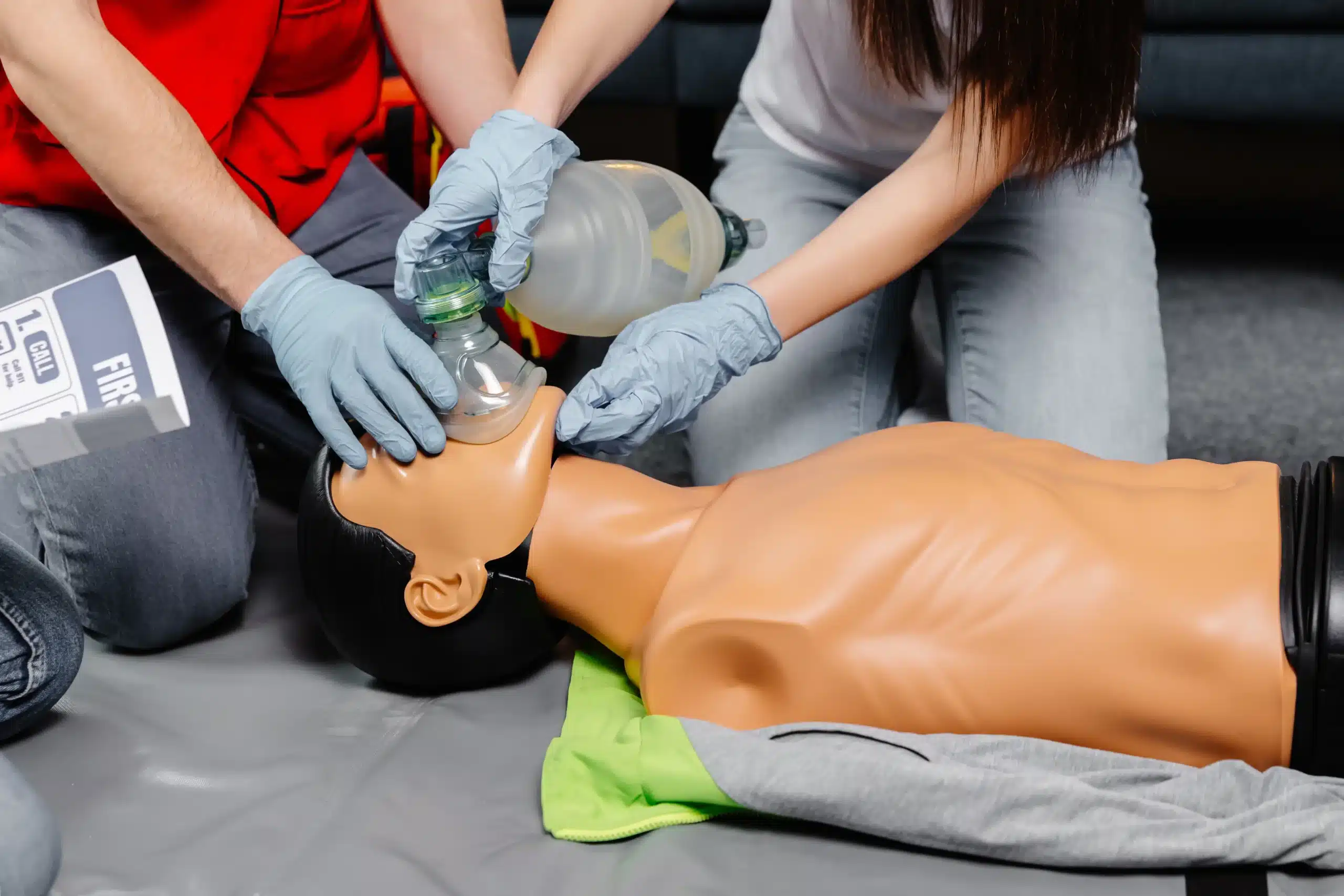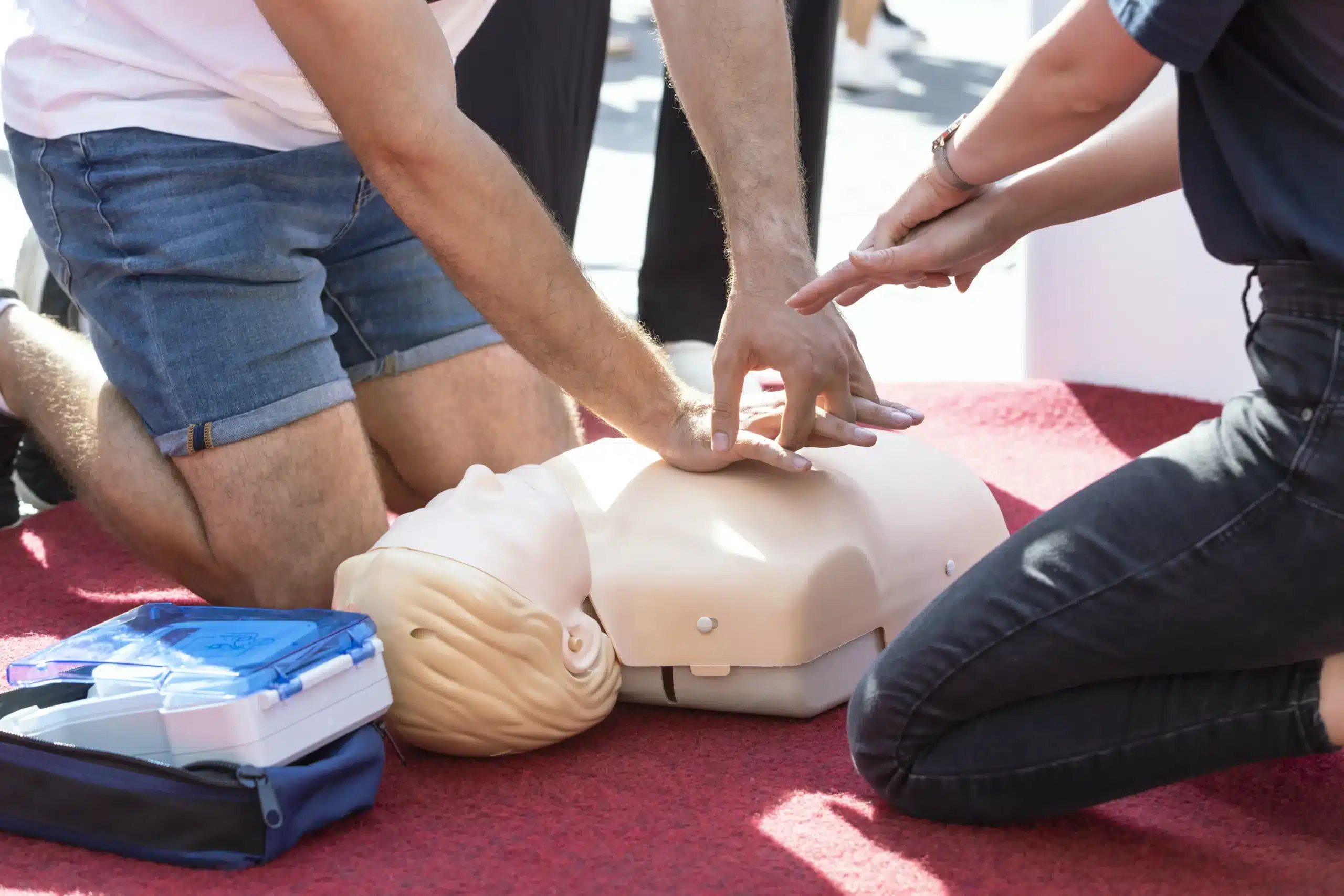Working in healthcare in Cupertino means being prepared for anything. From routine check-ups to sudden emergencies, you need the skills to handle any situation. BLS for healthcare providers in Cupertino is your foundation for responding effectively to life-threatening events. But where do you start? This comprehensive guide will walk you through the essentials of BLS certification, including key skills, common misconceptions, and how to choose the right training program. We’ll also explore top BLS certification options in Cupertino, compare costs and formats, and discuss the importance of instructor qualifications. Let’s make sure you’re ready for whatever comes your way.
Key Takeaways
- BLS certification is a must-have for healthcare professionals: It provides essential life-saving skills, boosts confidence in emergencies, and demonstrates your commitment to patient care. Choose a course with hands-on training and current AHA guidelines.
- Finding the right BLS course is a personalized process: Consider your learning style, schedule, career goals, and location. Explore in-person, blended, or online options (make sure online courses include in-person skills practice). Compare prices and check reviews before deciding.
- Stay current with your BLS skills: Certification typically lasts two years. Regularly renew your knowledge and skills to maintain your credentials and provide effective care. RQI courses offer a streamlined renewal option.
What is BLS?
Basic Life Support (BLS) is the foundation of resuscitation training for healthcare professionals like nurses, physicians, EMTs, and other first responders. It equips these frontline workers with the skills to handle life-threatening emergencies such as cardiac arrest, respiratory distress, and airway obstructions. BLS provides the essential tools to recognize and respond effectively when someone’s breathing or heartbeat stops.
Why BLS is Crucial for Healthcare Providers
Healthcare providers regularly interact with patients, and while not every interaction is an emergency, maintaining current BLS skills is critical. Regularly refreshing this knowledge is essential for responding effectively to cardiac arrest and other crises. BLS certification ensures healthcare professionals can deliver immediate, high-quality care, potentially making all the difference before more advanced medical help arrives. This rapid response can significantly improve patient outcomes.
Key Skills in BLS Training
BLS training covers a range of vital skills, with a strong emphasis on single-rescuer and team-based CPR (cardiopulmonary resuscitation). The training also includes how to use an AED (automated external defibrillator), a device that can help restore a normal heart rhythm. In addition to these core skills, BLS training typically covers relieving airway obstructions and providing ventilation support. These combined skills create a well-rounded approach to managing various medical emergencies. For more information, check out our BLS Certification course.
Common BLS Certification Misconceptions
One common misconception revolves around the name itself. While it was previously called “Healthcare Provider,” the American Heart Association (AHA) simplified it to “BLS” for clarity and inclusivity. Another misconception is the assumed difficulty of the course. While BLS covers more material and slightly more technical skills than standard first aid and CPR, it’s designed to be accessible. The emphasis is on practical application and building confidence. Our Low Price Guarantee ensures you receive excellent value for your training. Contact us with any questions.
Top BLS Certification Options in Cupertino
Finding the right BLS certification course can feel overwhelming, so we’ve compiled a list of reputable providers in and around Cupertino. Whether you’re a healthcare professional, a student, or someone wanting to be prepared for emergencies, this guide will help you find the perfect fit.
Campbell CPR Classes
For convenient, in-person training, Campbell CPR Classes offers AHA-certified BLS courses right here in nearby Campbell. Their focus on hands-on learning ensures you gain the practical skills and confidence to perform BLS effectively. They also offer a low-price guarantee for their courses. Check out their website for information on group discounts as well.
In-Home CPR
If your schedule is tight or you prefer a more personalized setting, In-Home CPR brings the training to you. They offer BLS certification classes at your Cupertino home or business, taught by experienced medical professionals. This option provides flexibility and individualized attention.
CPR Training Center
Located in San Jose, CPR Training Center provides AHA-certified BLS classes that cover essential life-saving techniques, including CPR for adults, children, and infants, AED use, and choking response. Their comprehensive curriculum ensures you’re well-prepared for various emergency situations.
American Heart Association Training Centers
For those seeking training directly through an AHA Training Center, Safety Training Seminars, a woman-owned business in Campbell, offers high-quality BLS courses. They provide a range of AHA certifications, including BLS, ACLS, PALS, CPR, and First Aid, with classes scheduled throughout the week for maximum convenience. You can contact them directly to learn more about their offerings.
American Red Cross
The American Red Cross also offers BLS certification and renewal courses in San Jose. Their program focuses on essential life support skills, such as assisting individuals who have stopped breathing or have a blocked airway.
Compare BLS Course Costs and Formats
When choosing a BLS certification course, consider cost, format, and schedule. Understanding these factors will help you find the right fit.
In-Person, Online, or Hybrid?
BLS courses come in several formats. Traditional in-person classes provide hands-on learning and direct interaction with instructors. Blended learning programs, like Simulation Learning, combine online coursework with an in-person skills session. This hybrid approach offers flexibility while still ensuring practical training. Fully online courses are also an option, but confirm they include a hands-on component, essential for mastering BLS skills.
Price Ranges and Group Discounts
BLS course costs vary. Some providers offer group discounts, so explore this option if training with colleagues. Campbell CPR Classes offers a low price guarantee, ensuring competitive pricing. Compare prices from different providers before deciding.
Flexible Scheduling
Many training centers understand busy schedules. Look for courses offered on evenings and weekends or providers like In-Home CPR that offer on-site training. Campbell CPR Classes offers courses seven days a week to accommodate various schedules.
Factors to Consider When Comparing Costs
Beyond the initial price, consider the overall value. A BLS certification is valid for two years. Factor in the cost of renewal courses when budgeting. Also, think about the time commitment. In-person BLS certification can often be completed in a single day. If you need to renew, explore RQI classes for a streamlined process. For questions, contact Campbell CPR Classes for assistance.
Instructor Qualifications and Course Quality
When your health—or the health of a loved one—is on the line, you want to know the person providing care has the best possible training. That’s why understanding instructor qualifications and course quality is so important when choosing a BLS certification course. Here’s what to look for:
Trainer Medical Backgrounds
Experienced medical professionals bring real-world knowledge to the classroom. Look for courses taught by EMTs, RNs, paramedics, or other healthcare providers with active clinical experience. These instructors can offer practical insights and answer your questions based on their firsthand experience. In-Home CPR highlights the medical backgrounds of their instructors, emphasizing this real-world experience.
Teaching Expertise and Methods
Effective teaching goes beyond simply presenting information. The best BLS courses incorporate engaging teaching methods, like real-life scenarios and simulations, to help you retain information and build confidence. The American Red Cross is known for its focus on real-world scenarios and emphasizes critical thinking and problem-solving skills. Hands-on practice is also essential. In-person BLS classes provide the opportunity to physically practice techniques, crucial for mastering life-saving skills.
Up-to-Date Course Content
Medical knowledge and best practices are constantly evolving. Ensure your chosen course adheres to the latest guidelines and uses current training materials. The American Heart Association (AHA) periodically updates its standards, so verify the course covers the most recent information, including the streamlined course name, Basic Life Support (BLS). Campbell CPR Classes stays ahead of the curve, offering comprehensive training and AHA-approved certification.
Get and Renew Your BLS Certification
Getting your BLS certification is straightforward, and renewing it is even simpler. Here’s what to expect for both initial certification and renewal.
Steps to Initial Certification
BLS certification courses, like those offered by Campbell CPR Classes, equip healthcare providers and other emergency responders with the skills to respond to life-threatening emergencies. You’ll learn how to perform CPR, use an AED, and relieve choking. The process typically involves registering for a BLS course, completing the training (often a combination of online learning and in-person skills practice), and passing a skills test.
Renewal Requirements and Timelines
Renewing your BLS certification every two years ensures your skills are current. The renewal process is similar to initial certification, but often shorter, as you’re already familiar with the material. You’ll participate in a refresher course and demonstrate your skills. This commitment to staying up-to-date is essential for providing effective care. Find more information on our BLS renewal page.
Maintain Your Credentials
After successfully completing the course and skills check, you’ll receive an American Heart Association (AHA) BLS Provider certification card. To maintain your credentials, keep track of your certification expiration date and plan to renew accordingly. The AHA’s RQI program offers a flexible and convenient way to renew your BLS, ACLS, and PALS certifications, allowing you to update your skills at your own pace. This program is a popular choice for medical professionals in the Campbell area.
Benefits of BLS Certification
As a healthcare provider, having up-to-date BLS certification is more than just a requirement—it’s a vital asset that empowers you with the skills and confidence to provide crucial care during emergencies. Let’s explore some key advantages:
Enhance Your Life-Saving Skills
BLS certification equips you with the practical skills to respond effectively to life-threatening emergencies. You’ll learn how to perform high-quality CPR, including chest compressions and rescue breaths. The course also integrates AED training, preparing you to handle cardiac emergencies and provide immediate assistance. This comprehensive training can significantly impact patient outcomes.
Improve Confidence in Emergencies
Picture this: you’re facing a medical crisis. The pressure is intense. BLS training prepares you for these high-stress situations, providing the knowledge and muscle memory to respond swiftly and confidently. This confidence not only benefits your patients but also reduces your own anxiety, allowing you to perform at your best when it matters most. Learn more about BLS training and certification.
Boost Professional Credibility
In healthcare, BLS certification is a recognized mark of competence, demonstrating your commitment to high standards of patient care. After completing the BLS course and skills check, you’ll receive an American Heart Association (AHA) BLS Provider certification card, validating your expertise and enhancing your professional standing.
Comply with Healthcare Regulations
Most healthcare facilities require BLS certification. This is because BLS training adheres to established guidelines, equipping providers with essential emergency response skills. Maintaining a current BLS certification ensures you meet these requirements and can continue practicing.
Choose the Right BLS Course
Finding the right BLS course means considering your learning style, career goals, location, and the course’s reputation. Let’s break down how to make the best choice for you.
Assess Your Learning Style and Schedule
Think about how you learn best. Do you thrive in a traditional classroom or prefer the flexibility of online learning? Many organizations, like the Red Cross, offer blended learning that combines online coursework with in-person skills sessions. Consider your schedule, too. A blended or online course might be a better fit than a fixed-schedule in-person class if you have a busy work life. Look for courses that offer weekend or evening options if those work better. Campbell CPR Classes offers a variety of schedules to accommodate busy professionals.
Match Courses to Career Needs
Not all BLS courses are the same. Some cater specifically to healthcare providers, while others are designed for a broader audience. Make sure the course aligns with your career requirements. If you’re a healthcare professional, look for a course covering the specific skills and knowledge you’ll need. BLS certification courses often cover topics like CPR for adults, children, and infants, how to use an AED, and provide relief for choking victims.
Evaluate Location and Accessibility
Convenience is key when it comes to training. Consider the course location and how easy it is to get there. If commuting is a challenge, look for options closer to home or work. Some providers, like In-Home CPR, offer training at your home or workplace. This can save you valuable time and travel expenses. Also, check if the training facility is accessible if you have any special needs.
Read Reviews and Testimonials
Before committing to a course, research the provider. Look for reviews and testimonials from past students to get a sense of their experience. Websites like Yelp and Google Reviews can be great resources. Positive feedback about instructors, course materials, and the overall learning environment can give you confidence in your choice. Positive reviews about hands-on training and knowledgeable instructors can be invaluable in helping you make an informed decision.
Related Articles
- Your Guide to BLS Classes in San Jose – Campbell CPR Classes
- BLS Certification in Cupertino: Your Complete Guide – Campbell CPR Classes
- BLS HeartCode San Jose: Your Certification Guide – Campbell CPR Classes
- BLS for Healthcare Providers in Campbell – Campbell CPR Classes
- BLS Renewal in San Jose: Find the Right Course – Campbell CPR Classes
Frequently Asked Questions
How long is BLS certification valid? BLS certification is typically valid for two years. It’s important to renew your certification before it expires to maintain your skills and comply with workplace requirements.
What’s the difference between BLS and CPR? CPR (Cardiopulmonary Resuscitation) is a specific skill within BLS (Basic Life Support). BLS encompasses a broader range of life-saving techniques, including CPR, AED use, and airway management. Think of CPR as one tool in the BLS toolkit.
Is online BLS certification accepted? Yes, online BLS certification is generally accepted, but it’s crucial to ensure the course includes a hands-on skills assessment component. This practical evaluation is essential for demonstrating competency and receiving a valid certification card.
What if I need to renew my BLS certification quickly? If you’re short on time, the AHA’s RQI program offers a flexible and convenient way to renew your BLS certification. This self-paced program allows you to complete the cognitive portion online and then schedule a short skills session, fitting renewal into your busy schedule.
How do I choose the right BLS course for me? Consider your learning style, schedule, and career goals when selecting a BLS course. Look for courses that offer flexible scheduling options, such as evenings and weekends, or blended learning formats that combine online coursework with in-person skills sessions. Make sure the course aligns with your specific professional needs and is taught by experienced medical professionals.


